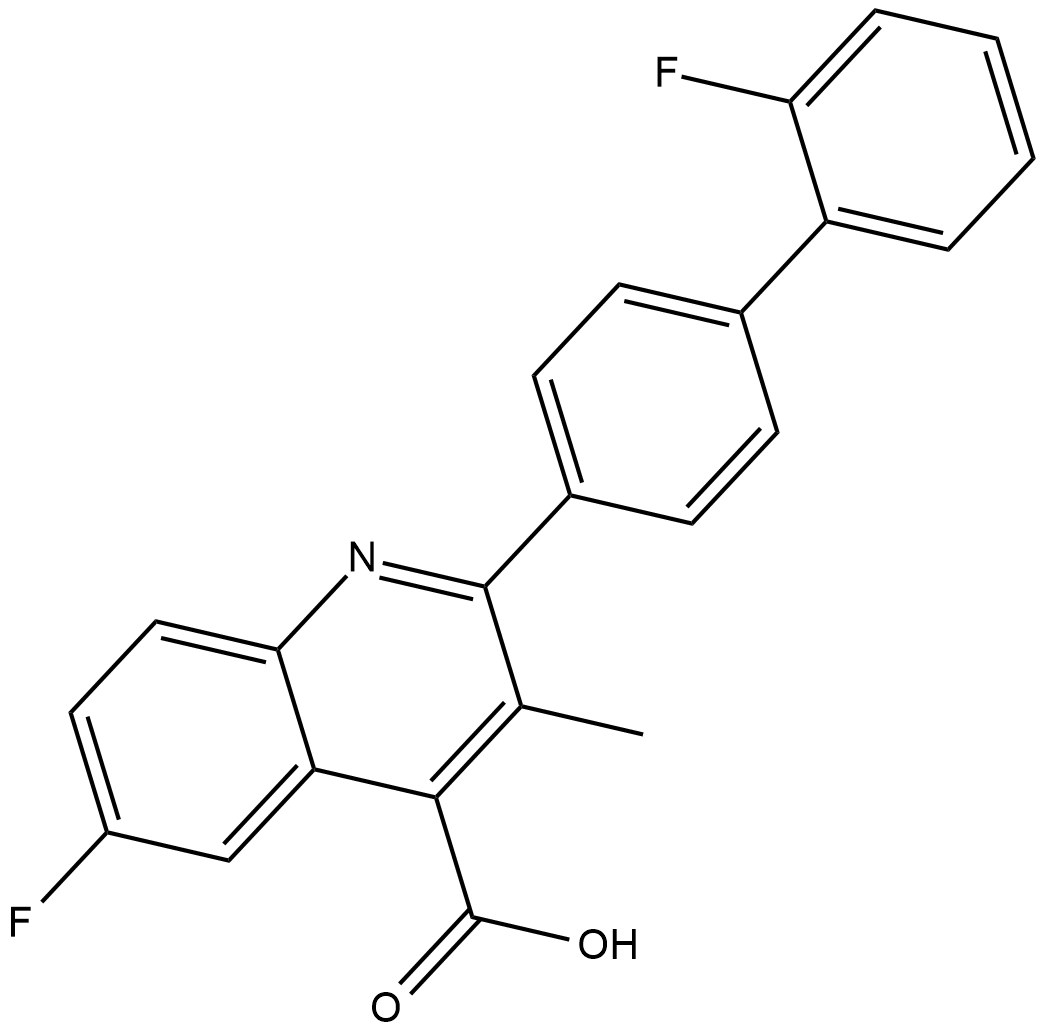Brequinar (Synonyms: NSC 368390) |
| Catalog No.GC19082 |
Brequinar is a specific dihydroorotate dehydrogenase DHODH inhibitor with an in vitro IC50 value of approximately 20nM.
Products are for research use only. Not for human use. We do not sell to patients.

Cas No.: 96187-53-0
Sample solution is provided at 25 µL, 10mM.
Brequinar is a specific inhibitor of dihydroorotate dehydrogenase DHODH, with an IC50 value of approximately 20nM in vitro [1]. DHODH is an enzyme in the de novo pyrimidine biosynthesis pathway. Buquina's mechanism of action is to target viral DNA synthesis by inhibiting DHODH activity and depleting the cellular pyrimidine pool [2].
In vitro, Buquina (0-75μM) treated BSC-40 cells infected with CTGV virus for 24 hours, significantly inhibiting the intracellular CTGV virus production in a dose-dependent manner, with an EC50 of 0.017±0.05μM, and could be inhibited at a high concentration of 75μM. Ensure that cell viability is maintained at nearly 80%[2]. Buquina (0-25μM) treated Vero cells infected with DENV-2, WNV, YFV, PWV, and WEEV viruses for 42 hours, effectively inhibiting all tested viruses, and the antiviral activity was not caused by compound-mediated toxicity [3]. Buquinar (0-100 μM) treated IBRS-2 cells infected with FMDV for 8 hours and effectively inhibited the protein and mRNA expression of FMDV [4].
In vivo, Buquina (50μg) treated FMDV-infected suckling mice (body weight 3-4g) through intraperitoneal injection, significantly prolonging the survival time of suckling mice and reducing the lesions of cardiac tissue [4]. Buquina (10-20 mg/kg) was treated with BALB/c mice through intraperitoneal injection, causing a 31% reduction in blood cell accumulation volume percentage, and a 30% and 25% reduction in UTP and CTP levels in bone marrow cells, respectively, indicating that Buquina Quinal treatment of mice may induce anemia [5].
References:
[1] Sykes D B , Kfoury Y S , Mercier F ,et al.Inhibition of the Enzyme Dihydroorotate Dehydrogenase Overcomes Differentiation Blockade in Acute Myeloid Leukemia[J].Blood, 2016, 128(22):1656-1656.
[2] Schnellrath L C , Damaso C R .Potent antiviral activity of brequinar against the emerging Cantagalo virus in cell culture[J].International journal of antimicrobial agents, 2011, 38(5):435-441.
[3] Qing M , Zou G , Wang Q Y ,et al.Characterization of dengue virus resistance to brequinar in cell culture.[J].Antimicrobial Agents and Chemotherapy, 2010, 54(9):3686-3695.
[4] Li S F , Gong M J , Sun Y F ,et al.Antiviral activity of brequinar against foot-and-mouth disease virus infection in vitro and in vivo[J].Biomedicine & pharmacotherapy, 2019, 116:108982.
[5] Xu X , Williams J W , Shen J ,et al.In vitro and in vivo mechanisms of action of the antiproliferative and immunosuppressive agent, brequinar sodium.[J].Journal of Immunology, 1998, 160(2):846-53.
Average Rating: 5 (Based on Reviews and 3 reference(s) in Google Scholar.)
GLPBIO products are for RESEARCH USE ONLY. Please make sure your review or question is research based.
Required fields are marked with *




